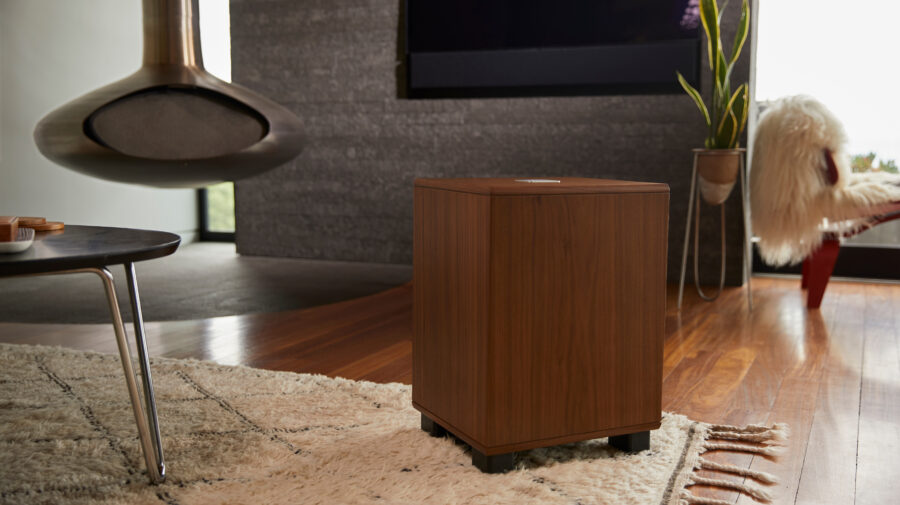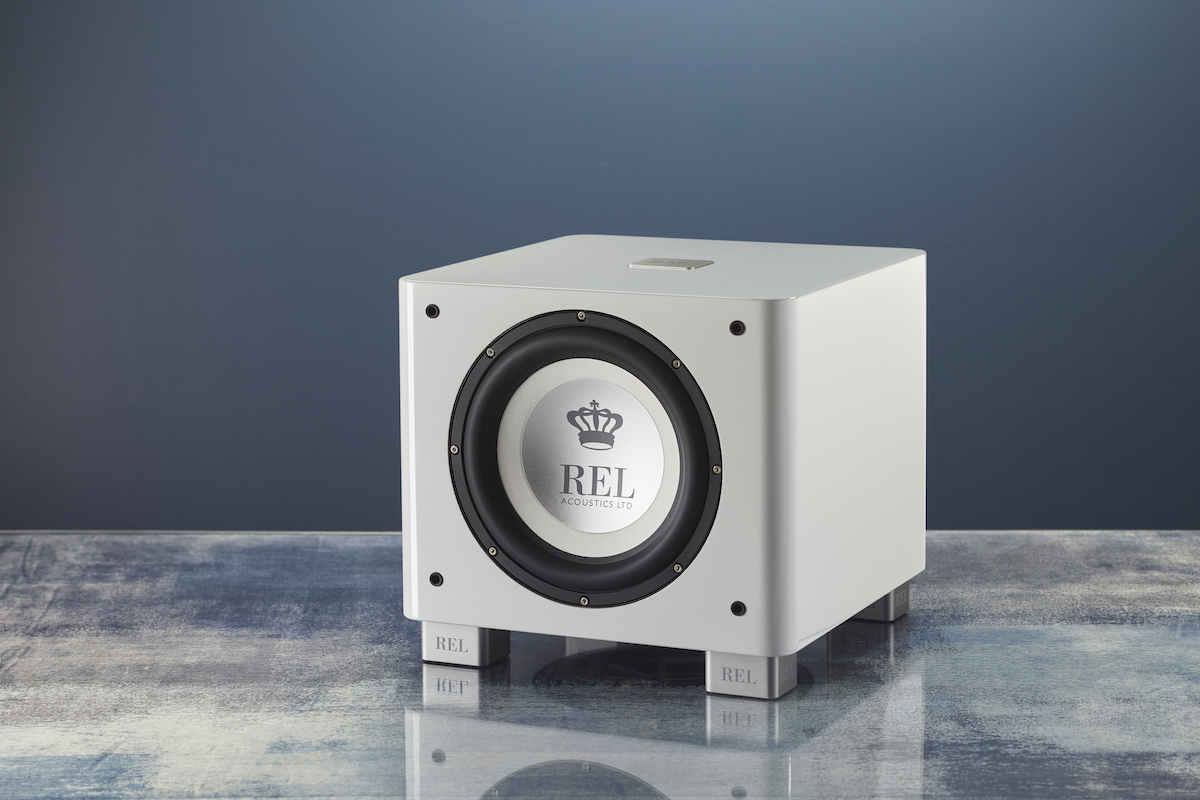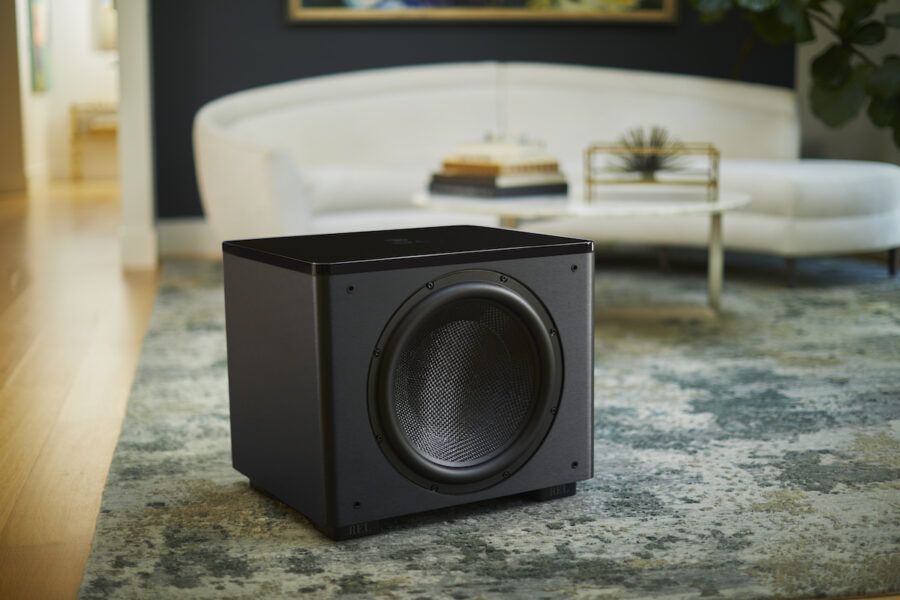Blog
Classic 99 Compared
T/9x, Classic 98 and Predator Meet Classic 99

Let’s start with Classic 99, giving you a clear outline of its character, its sonic signature, and its strengths. Then we’ll compare how Classic 98 measures up to its bigger, more powerful stablemate. Next up, we’ll look at the evergreen T/9x, one of the most versatile and well-liked models REL has ever produced. Finally, we’ll finish up with a quick review of HT/1510, a 1,000-watt beast with a 15” driver that brings the business (there’s a reason we call it the Predator II!”
Classic 99 was developed to further explore the benefits of using a larger model of a pure down-firing subwoofer. Down-firing subs have two main attractions: they allow for a pure form and they possess a rich, powerful sound that’s often described as “room-filling.” This is because the driver faces downward, just a few inches off the floor, and the sound gets squeezed out between the bottom of the cabinet and the floor. This produces greater efficiency (think of the floor as a big horn-loaded driver) and gives them their characteristic big sound.
With four REL models priced within $600 (or £600) of each other, we felt it would be helpful to understand how to focus on your needs so that you can find the subwoofer that’s ideal for your individual listening requirements – what will best work in your room given your principal intended usage–be it theatre, music or a combination of both.

Classic 99, like Classic 98 that preceded it, is clad entirely in beautifully tasteful premium wood veneer. The walnut is found in Kentucky, Ohio, Tennessee and parts of Virginia, areas with just the right rainfall to allow strong, clean walnut trees to grow with perfect, clear grain structure and the rich, dark hues we find so attractive. Further south additional rainfall produces a sappy, yellowish tint to it. Ours will remind you of a rich mocha blended with dark chocolate. People simply love it and it elevates a basic form into a very special design . That means Mid-Century Modern rewards with no unnecessary embellishment in both Classic 99 and the 98, and no grille is needed as the driver fires straight down. If you’re not a modernist, don’t worry since these seem to make even the traditionalists happy.
Classic 99 has a huge, rich character that really gets going on concussive music and special effects in movies. With a generous 450-watt amplifier – we always rate our amps to deliver continuous power over the subwoofer’s full range which is something few subwoofer manufacturers do. We don’t know why but suspect it allows them to post a bigger number for advertising because when it only has to make power for an instant, their amp posts a bigger number. Really? So, what? Napoleon’s cannon fusillades have to be edited down to just 5 cannons allowed in a volley because the other guy’s power supplies crap out when more that 6 in a row are being fired?
At $1899, it’s not cheap, but then it’s not cheaply built. The cabinet walls are 32mm thick (1-1/8”) in places that matter because we know those parts of the cabinet that reward extra rigidity and damping. And the long stroke 12” (300mm) driver produces exceptionally deep bass. While it’s not as fast as, say, a T/9x, it makes up for it with that heavy, weighty sound some find irresistible. So, powerful and profound in scale for its size? Some will guess that it must be thick, slow, and ponderous. Don’t be that person… you would be wrong. In fact, during development, those of us in engineering couldn’t get over how open and uncomplicated it kept things. It has a way of simplifying complex passages, allowing one to get straight to the meaning of the music, and actually sounds faster than the smaller Classic 99. And, while it doesn’t have the profundity of ridiculously loud, deep bass like a HT/1510 (not much does) in this price category, its grand scale plays well in larger rooms. One special application we’ve begun using it for, in high-end theatre usage, is as a rear channel subwoofer. Experts understand that the rear channel subwoofer is responsible for carrying 3-dimensional scale throughout the theatre, which is requisite for a theatre to be transformative; and to take on the dimensional scale of the scene before your eyes and all around you. Both Classic 99 and, on a tighter budget and for medium and smaller-sized rooms, Classic 98 do this brilliantly. So how does our Classic 98, T/9x and HT/1510 compare with Classic 99? Great question!

First Up? Classic 98:
Got a medium-sized or smaller room? Own a pair of moderately-sized speakers and looking for that big sound that RELs deliver and the improvements to drama, scale, and midrange imaging that seem to be a REL patent? This one does a brilliant job of delivering at being “Classic 99 Light” (not that its sonic signature is lightweight, or that its scale is on the smallish side). Overall, Classic 98 will be a pleasant surprise. Still, in direct comparison with Classic 99, it clearly doesn’t play quite as loud, nor go as deep, but that shouldn’t be a surprise. Where Classic 99 separates itself from Classic 98 is not where most would guess. Audiophile lore declares that a smaller driver (in the case of Classic 98 a beautifully developed exclusively 10” driver with pulp on hot pressed paper) sounds similar to the Classic 99, But it’s the Classic 99 that proves to be lighter on its toes, more supple, and more expressive in the critical midranges where openness and imaging specificity are needed. Classic 98 extends higher up and making it a better match for medium and smaller speakers, whereas Classic 99 comes into its own with speakers that have naturally weighted mid-bass already.
What about a pair of Classic 98s versus a single Classic 99? Look, stereo pairs always have an advantage over a single unit, but the answer here lies in knowing the strengths of your speakers. Do you own middle-weight speakers that already have decent fullness to the mid-bass and are just lacking true deep bass? Get a single Classic 99. Using a pair of stand-mounted speakers that don’t go down much past 60 Hz? A pair of Classic 98s will do nicely, as they reach a little higher in frequency. And, of course, you can buy them one at a time.
I will say that hearing stereo pairs of Classic 99 will be a surprise to many. Wow! The extra speed and transparency with the right speakers (those of you who own Vandersteen 2’s rejoice) is downright shocking.

T/9x: Next up?
The never-let’s-you-down T/9X. This model makes so many owners happy. Whether it’s that it does both music and theatre so well, that it has enough speed and resolution to keep up with the majority of speakers out there, or that it plays so darned loud and can fill even a large room with decent amounts of output, this thing just makes owners smile.
So Classic 99 or T/9x? Well, it always depends on the room and speaker, but here goes: Classic 99 will sound bigger and hang on deeper than the T/9x. So, if it’s room-filling bass you’re looking for, the 99 is your go-to. It’s especially good at jazz and acoustic music where attack in the bass is rarely featured. It also excels at hip hop, where leading-edge definition to bass reproduction isn’t as critical as the sense of heavy, weighty bass. Both have great image fill, wherein the center and even outer edges of the image become more naturally filled in with secondary details. Ones you didn’t previously know were missing from your system’s ability to resolve these elements until you hear when listening live. Where the T/9x has it over the Classic 99 is on dynamic, well-recorded rock. The forward-firing driver yields better attack and, with its down-firing passive, it does almost as well at the room-fill part of the equation as Classic 99. T/9x excels as a primary subwoofer in home theatre too. We use these all the time as the main sub in theatre, while in larger systems we often spec these as the center channel sub (connected High Level only) where it utterly transforms the front 1/3 of your theatre. The Classic 99 has become a new favorite in those same REL 3-D spec’d theatres as a surprise best-in-class rear channel sub. Why? Because it excels at spaciousness. What it gives up in leading-edge transient response matters little in the rear channels, where the primary job is to reproduce the sense of (often) huge spaces and put you in the 3-dimensional envelope that renders great, truly immersive. theatre.
And in this corner “Predator II!” (spoken in my best imitation WWF announcer voice.) Here, the choice becomes a bit more obviously delineated. Right off the bat, if your primary mission for one of our subs is to be the BADASS LFE CHANNEL in your home theatre please run, do not walk, to your REL dealer and audition the HT/1510. It has the capacity to induce violence on a scale that’s rare in its price range. That violence comes from its combination of awesome output levels (a respected YouTube reviewer recorded a max output of 115 dB) and speed. It’s that latter that induces the “fight or flight” response so strongly in HT/1510-anchored theatres. Through this subwoofer, explosive impacts like large caliber handgun shots that are well-recorded take on a visceral crack that makes one wince. Ditto the hand grenade explosions. Where most theatre subs produce a loud thump, the 1510 hangs onto the leading-edge crack to take these effects over the edge.

Regarding music, both do well. Perhaps surprisingly, the HT/1510 has the edge in speed and resolution over Classic 99, whereas the 99 produces an easygoing, kinda head nodding likability that many will find infectious. Both extend remarkably low, and while the HT/1510 hangs on cleanly just a couple of clicks lower, Classic 99’s strength as a musical sub is that it blends so beautifully and allows one’s system to take on this effortless, big character that is highly addictive. In the end, this mostly comes down to a simple “music versus theatre” choice. The Classic 99 does theatre really well. The HT/1510 does so spectacularly.
There you have it, a quick rundown of the character and strengths that define what’s surely to become one of the most delicious sets of choices our customers have ever had to make. In this brief piece, we’ve tried to quickly describe and share what we’ve learned about all four models in an effort to help you make the best decision for YOUR needs. Your tastes, your speaker’s capabilities, and your room’s demands all will help you define which of these models will be the best solution for you. We hope this was helpful. Please don’t hesitate to reach out (info@rel.net) if you still need clarification on the finer details that may assist in your decision-making process. We have talented, knowledgeable, and sincere people who are reachable by email or phone in North America and in our UK offices. Thank you for reading.
Thank you for reading our latest blog. We strive to provide content that’s both entertaining and educational.
If you have questions or suggestions for future articles, reach out to us at info@rel.net. We value your input and will do our best to respond within a few days.
With over 160 years of combined experience, we’re committed to making your audio experience exceptional. If you found value in this piece, please share it with friends who might benefit.










